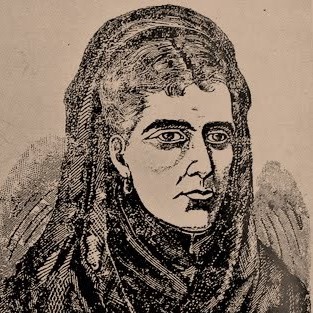
Guadalupe Martínez de Bejarano
Summary
Name:
Guadalupe Martínez de BejaranoNickname:
La Temible Bejarano (The Fearsome Bejarano) / La Mujer Verdugo (The Executioner Woman)Years Active:
1877 - 1892Status:
DeceasedClass:
Serial KillerVictims:
3Method:
Torturing / StarvationNationality:
Mexico
Guadalupe Martínez de Bejarano
Summary: Serial Killer
Name:
Guadalupe Martínez de BejaranoNickname:
La Temible Bejarano (The Fearsome Bejarano) / La Mujer Verdugo (The Executioner Woman)Status:
DeceasedVictims:
3Method:
Torturing / StarvationNationality:
MexicoYears Active:
1877 - 1892bio
Guadalupe Martínez de Bejarano came from a life shrouded in mystery—little beyond her name emerged from the pages of history. Still, through scant details, a chilling portrait surfaces: a woman married to a certain Bejarano, with whom she had at least one child, a son named Aurelio Bejarano Martínez. Her appearance and criminal method suggest she belonged to a high or upper‑middle social stratum.
in January 1876, her cruelty turned inward. The teenage Aurelio, reportedly beaten until his skin burst open and then locked in a wooden box as punishment, escaped and begged for help on the streets near their home on Calle Corazón de Jesús. His suffering became public through letters and press appeals, in which Guadalupe coldly wrote back, blaming his mistreatment on his “lack of respect for study and love”.
murder story
The nightmare began in June 1878, when Guadalupe was arrested in Tacubaya after police received a tip from her building’s portera. Investigators discovered 12‑year‑old Casimira Juárez locked under the staircase, her body marked by grotesque torture: atrophied limbs tied into an X, burns, bruises, even maggot‑ridden wounds. She died several days later.
Despite her monstrous acts, Guadalupe received a 13‑year prison sentence, and was pardoned by President Porfirio Díaz in August 1886.
Around 1892, shortly after her release, she lured two sisters—Guadalupe and Crescencia Pineda—into her home with promises of household work. Slowly, over weeks or months, she tortured them in the same sadistic style: starvation, beatings, burns with heated metal, and psychological cruelty. The details emerged as survivors and officials recounted how the girls vanished, only to later turn up in the hospital or morgue, battered and broken.
Once again arrested, the case took a dramatic turn when her son Aurelio identified her in court. She vehemently blamed him in return, but nobody believed her.
A court sentenced her to 10 years and 8 months in Belén women’s prison, while Aurelio, her own flesh and blood, received 2 years for failing to act. Now truly reviled, Guadalupe spent her days in isolation, hated by fellow inmates, feared by guards, despised by the public. While in custody, she died of natural causes, years before finishing her sentence.